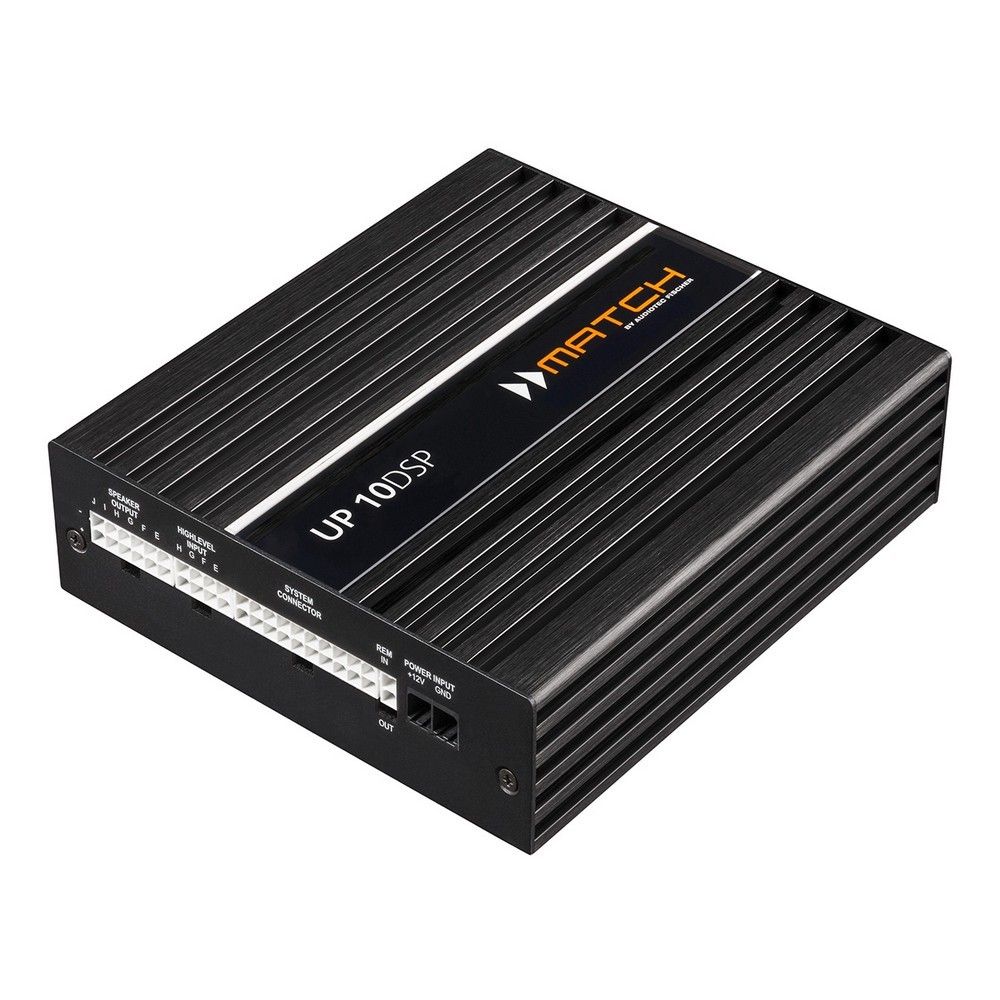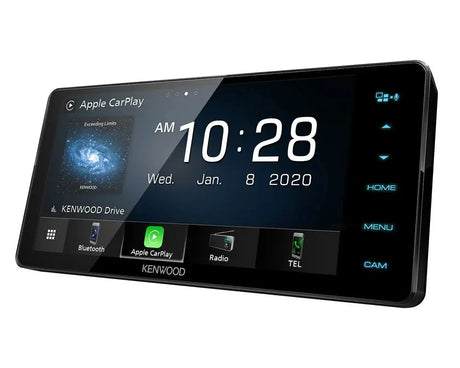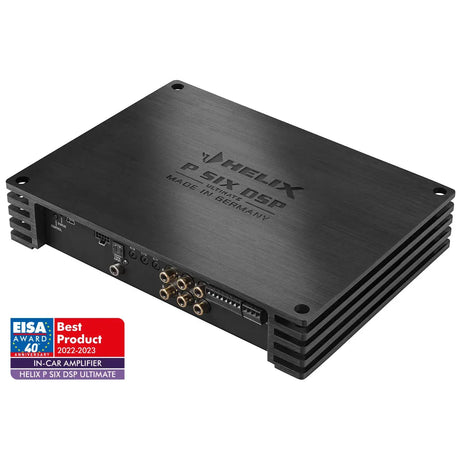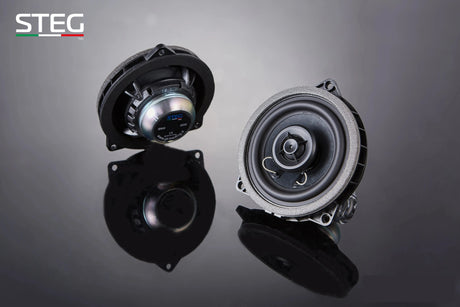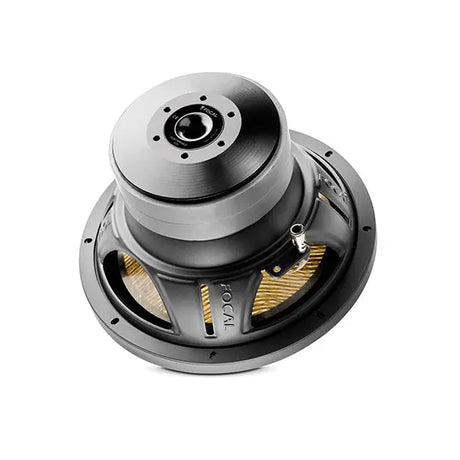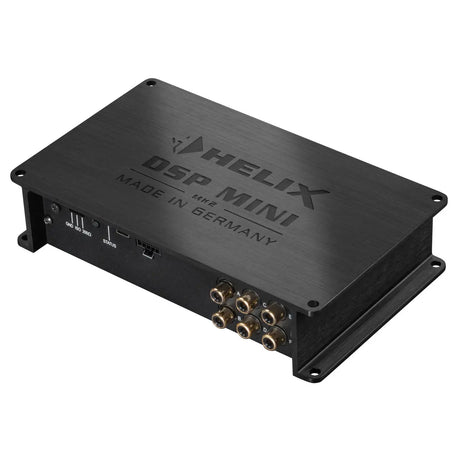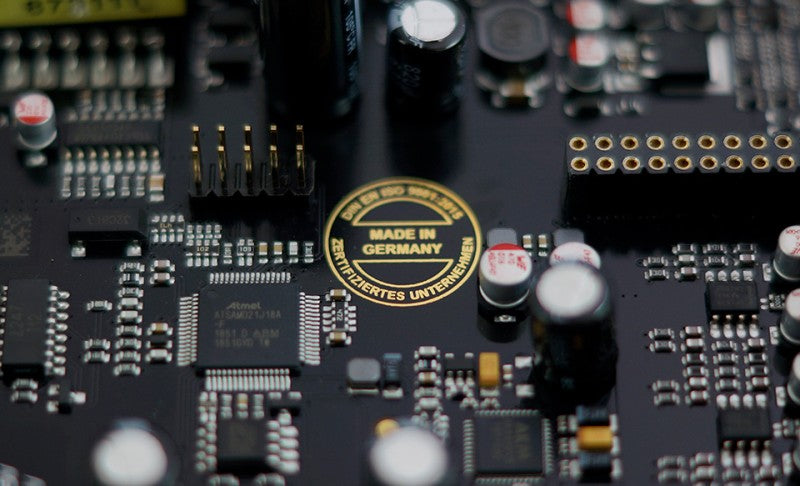Design Ideologies
The new UP 10DSP is a true all-rounder that not only delivers unbridled power and dynamics for true high definition sound, it also comes with all the prerequisites for easy integration into the vehicle.
Seamless Connectivity
With its eight high-level inputs, an optical digital input, the Match extension card (MEC) slot and many intelligent technologies such as the proprietary ADEP.3 circuit; the UP 10DSP is perfectly equipped for seamless adaptation to existing multi-channel sound systems. With a total of ten amplifier channels as well as the additional line output, in combination with the powerful 11 channel DSP; individual speaker configurations can also be handled without ado. Two of the amplifier output channels deliver 160 watts continuously into 2 Ohms, which is plenty for fuelling even large subwoofers.
Virtual Channel Processing
To successfully interface with OEM multi-channel sound systems, you’ll require sensible management and configuration of the many DSP channels. Ergo it was no question that this unit is also equipped with Audiotec Fischer’s innovative virtual channel processing. When dealing with front, rear, centre and everything else as separated channels conventional routing concepts quickly reach their limits; both in terms of implementation and usability. The multi-stage virtual channel processing, in conjunction with the recognized user-friendly PC-Tool software; makes it easy to map even highly complex system configurations and to freely assign Match’s proprietary FX sound features. Between its generous number of channels, made even more if you use the optional MEC ANALOG IN module; this unit is also a prime example for applications where 1 to 1 routing (IOR) is required.
Advanced 32-Bit CoProcessor Platform
This unit is equipped with Match’s proprietary 32-bit ACO platform, which doesn’t just handle all control tasks ultra-fast, it also handles a bunch of extra audio functions such as augmented bass processing, RealCenter and a channel separated Input EQ including Input Signal Analyzer (ISA) for easy analysis and compensation of input signals of OEM radios, many of which feature existing processing from factory.
PC-Tool 5 Featuring TuneEQ
The user software offers powerful features to achieve the ultimate sound experiences. This unit can be easily configured via the latest version of the professional and exceptionally intuitive PC-Tool 5 software. The numerous setting options with their extensive sound processing functions leave nothing to be desired, guaranteeing an extremely precise sound adjustment even under the most austere conditions. And thanks to the new, proprietary TuneEQ function for automated frequency response correction, you can save a lot of time when optimizing your sound.
Pure Class GD Amplifier Technology
Audiotec Fischer’s proprietary pure class GD concept takes the efficiency of conventional class D switching to the next level. By varying the internal supply voltage depending on the amplifier’s input signals; idle losses are significantly reduced and overall efficiency is close to maximum at any time.
As a result, heat dissipation is almost negligible thus allowing smallest heat sinks and most compact form factors. Pure class GD amplifiers outperform conventional class D designs in terms of sound quality, by implementing a fully differential signal path and improved output filter design.
Smart High-Level Input ADEP.3
Modern factory installed audio systems incorporate sophisticated abilities that diagnose all connected speakers. Latest generations of cars are equipped with additional monitoring functions so that failure messages and loss of specific features such as parking sensor and lane departure warnings often appear if a signal processor is plumbed in. Not with the this unit though. The new ADEP.3 circuit (Advanced Diagnostics Error Protection, 3rd Generation) avoids all these problems without loading the speaker outputs of the OEM radio during high volumes unnecessarily.
Start-Stop Capability
The switched power supply assures a constant internal supply voltage even if the battery’s voltage drops to six volts during engine cranking.
Power Save Mode
The Power Save Mode is also incorporated. It allows to significantly reduce the power consumption of the amplifiers that are connected to the processor once there’s no input signal present for more than sixty seconds. Many newer cars utilising digital networks and other internal bus structures may remains invisibly turned on for up to 45 minutes after you’ve locked the car! Once the power save mode is active the remote output and therefore the connected amplifiers will be turned off. The processor then reactivates the remote output within a second if a music signal is applied. It is possible to either modify the turn-off time or completely deactivate the function via PC-Tool software.
Automatic Signal Detection
Switching from analogue input to one of the digital inputs is done automatically as soon as a signal is detected on the optical or coaxial input. This feature can be deactivated in the DSP PC-Tool software. Alternatively you can use an optional remote control for manual switching between sources.
Design Features
– Ultra efficient 10 channel amplifier with 1 channel line output and 11 channel DSP.
– Perfect for upgrading multi-channel factory sound systems.
– Optional cable harnesses for easy integration into existing multi-channel factory sound systems.
– Extremely powerful 64-bit fixed point audio DSP.
– Advanced 32-bit CoProcessor platform for extended feature set such as Input Signal Analyzer (ISA) and InputEQ for easy analysis and compensation of input signals, proprietary TuneEQ function for automated adjustment of the output equalizers and DSP sound effects like augmented bass processing, RealCenter plus more.
– Smart 8 channel high-level input with ADEP.3 circuit.
– 1:1 input-to-output routing (IOR) in combination with the optional MEC ANALOG IN module allows the unit to have the same number of high-level inputs as amplifier outputs.
– Virtual channel processing allows even more flexible configuration for highly complex sound systems.
– Match extension card slot (MEC) for system expansions like Bluetooth® high definition audio streaming, high resolution audio streaming via USB etc.
– Optical input in SPDIF format with sampling rate between 12 and 96 kHz.
– Mono RCA output for the connection of an external amplifier, e.g. subwoofer amplifier.
– Smart control port for optional accessories DIRECTOR, CONDUCTOR etc.
– Auto remote switch.
– Start-stop capability down to 6 Volts supply voltage.
– Compact design with low heat dissipation thanks to extraordinary efficiency.
DSP Features Explained
All Match digital sound processors posse and extraordinary amount of technology. With said technology comes terms and acronyms aplenty. We’ll explain some of them below thenceforth.
TuneEQ
TuneEQ is an extremely flexible and particularly easy-to-use function for automated frequency response correction. A single measurement per audio channel or channel pair with a suitable measurement microphone such as the Helix MTK1 is sufficient for TuneEQ to independently and precisely adjust the equalizers to the desired reference curve. TuneEQ uses the full function set of the parametric equalizer including centre frequency, Q-factor and gain adjustment. And since the highly complex arithmetic operations required for this run in the background, you also save a lot of time when optimizing your sound with TuneEQ.
RealCenter
The RealCenter feature is an algorithm developed by Audiotec Fischer that emphasizes the music information which is present in both the left and right front channel to create an unique centre signal. In contrast to common procedures, in which only the channels are summed up; the intensity of the centre signal is also dynamically controlled by the stereophonic informational content of the left and right channel.
Sounds complicated but this effect is astonishing: That means if solely the left or right channel delivers an audio signal, the centre channel will not reproduce a signal. In the case of common algorithms the volume level of the centre channel is only reduced by 6 dB. Audiotec Fischer’s RealCenter allows a unique, broadened sound staging for both driver and co-driver at the same time! Therefore, the disadvantages of a conventional center channel such as an intrusive, small sound stage, are things of the past.
Augmented Bass Processing
Audiotec Fischer’s proprietary augmented bass processing consists of the two revolutionary sound features called Dynamic Bass Enhancement and SubXpander. These have been especially developed to dramatically improve the bass reproduction of subwoofers. The dynamic bass enhancement ingeniously combines maximum deep bass and highest sound pressure regardless of the music style or the tone controls in the head unit. Depending on the input signal, the dynamic bass enhancement gains the lower frequency range and varies the cut-off frequency of the subsonic filter. The result is a significantly more powerful and deeper bass response at low and medium volume levels without the risk of overloading the subwoofer neither mechanically nor electrically at high volume levels. It is simply fascinating how much subbass performance is suddenly possible.
If you want an even lower and darker bass reproduction, the SubXpander can be additionally activated. In doing this, subharmonic tones are added to the fundamental tones in the frequency range between 50 and 100 Hz.
StageXpander
Regardless of the speaker arrangement in the vehicle a wide stereo sound stage can be created on the front seats. A center speaker often will limit the spatial reproduction of the music additionally. This is where Audiotec Fischer’s new StageXpander comes into play. It’s a sound feature which seems to break the acoustic limitations and thus allows to create a way broader stereo base without negatively affecting the precision of the localization of voices or instruments! The effect can be adjusted according to your personal preferences.
ClarityXpander
If you’re looking for more transparency and substance in the treble reproduction, then the ClarityXpander tool is what you need. Properly adjusted the feature adds additional harmonics in the upper frequency range; this is especially useful if the original speakers lack brilliance in the treble response. The extra treble is not only available for the two front channels but also separately adjustable for the centre channel. Even better, the centre channel allows to activate an automatic and dynamic control so that music with loads of treble doesn’t fatigue your hearing.
